Amphipolis Greek Tomb: Exquisite Statues Reveal Platform Shoes were Chic 2,500 Years Ago [PHOTOS]
Greek archaeologists excavating a massive Alexander the Great-era burial mound complex at Kasta Hill, in the northern Greek region of Serres, have released amazing new photographs showing the full bodies of two large exquisitely carved caryatid marble statues found on 7 September (click here for photos of the caryatids' faces).
The statues stand over 7.5ft tall and amazingly their bodies and delicately carved feet are still intact, with them wearing kothornoi, ancient Greek ladies' shoes that resemble platform sandals.
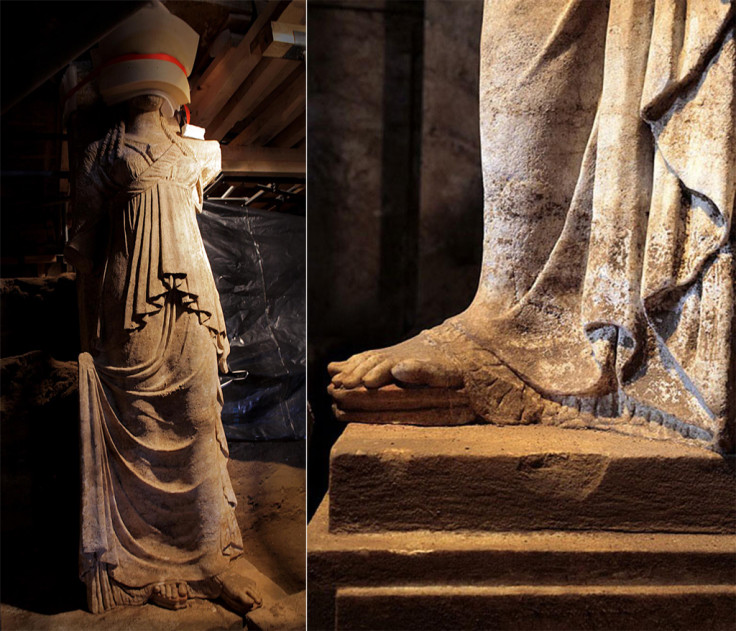
The multitude of layers and folds that make up the caryatids' clothing feature very intricate details with a visible under-layer and traces of red and yellow paint still remaining on their feet.
News of the discoveries is becoming more frequent since the Greek government formally announced to the world that the tomb had been discovered in Amphipolis last month, a Greek city that was founded by the Athenians in eastern Macedonia on the Strymon River in 438-437 BC.

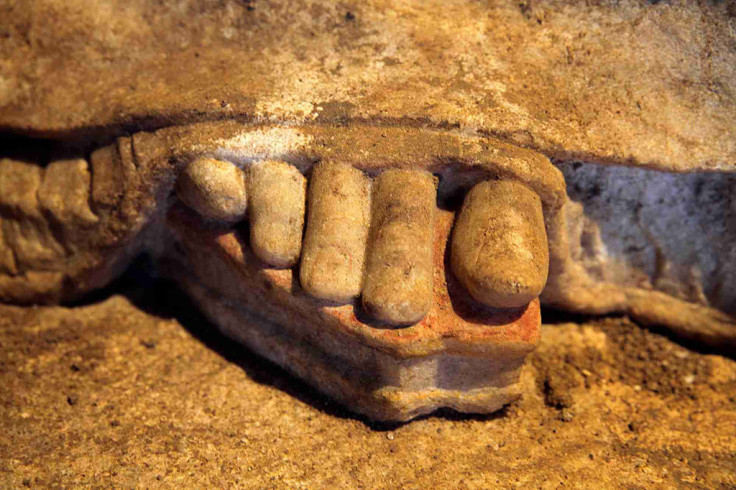
Archaeologists took two years to excavate the burial mound on Kasta Hill to discover the entrance of the tomb, which is guarded by two sphinxes who lost their heads and wings in antiquity.
It is believed the tomb houses a very important figure from 320-300 BC, as the burial complex is ten times larger than the tomb of Alexander's father, Philip II of Macedon. Greek media have repeatedly hypothesised that the tomb could belong to Alexander the Great but that is unlikely as the tomb was built after his death and his tomb is believed to be somewhere in Egypt.
Yesterday, Greece's Culture Minister Kostas Tasoulas confirmed it was impossible for the great historical figure to be buried in Kasta Hill, according to Greek local newspaper Kathimerini.
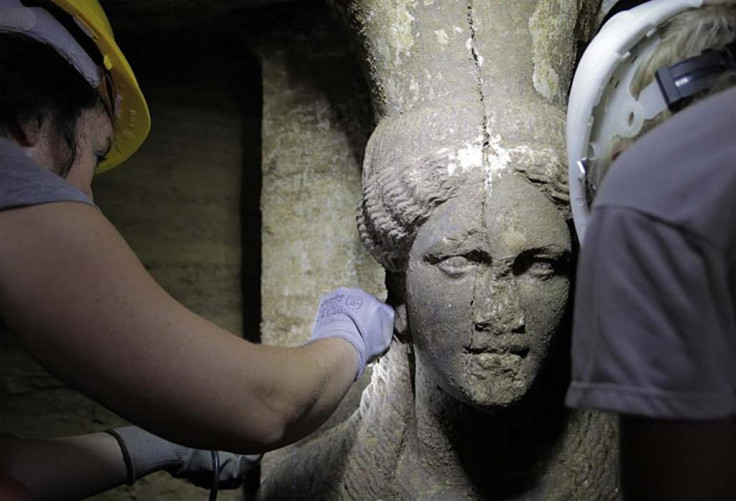

Behind the sealing wall, an antechamber and three other chambers have discovered, and it appears the tomb was sealed by pouring sandy soil into the tomb through gaps at the top of the diaphragmatic walls of the chambers.
In the antechamber, a stunning mosaic floor made from pieces of white marble on a red background was uncovered just behind the tomb entrance at the end of August.
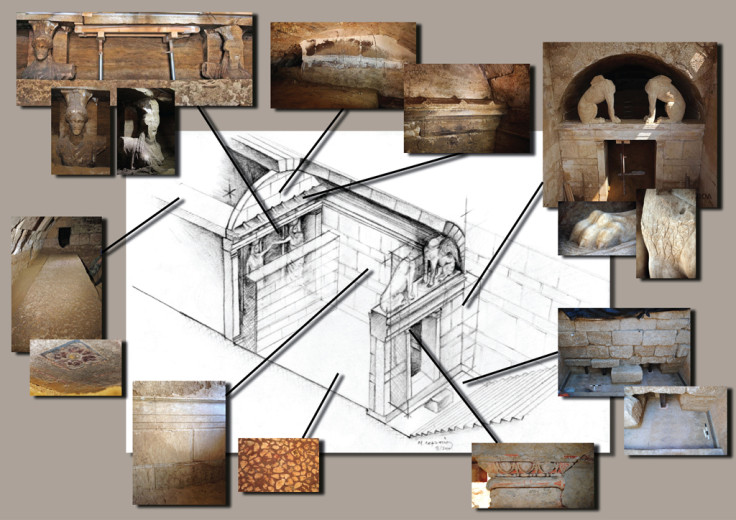
Behind yet another diaphragmatic wall, the caryatids (sculpted female figures serving as an architectural support) were found in an architrave (such as a door lintel held up by two columns) and each have an arm outstretched, guarding the entrance to a second chamber, which has been sealed by a 4.5m-wide limestone wall.
The statues are believed to have been made of marble that would have been imported from the nearby island of Thassos, and look to be the same handiwork as the sphinxes.
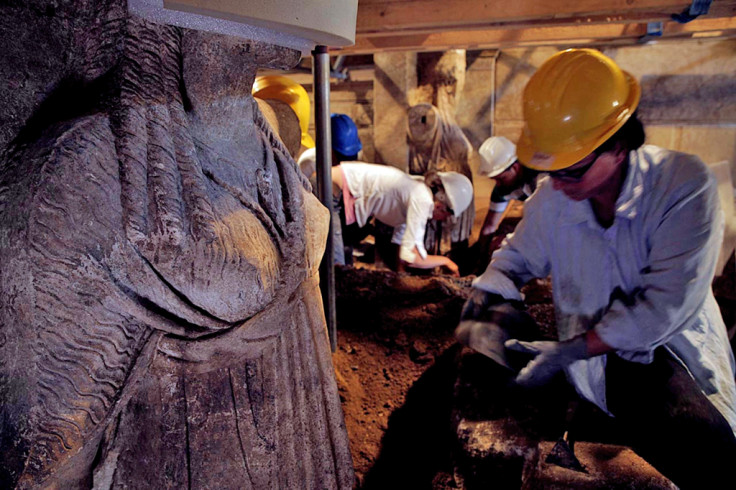
Traces of red and blue colouring have been found on the statues, which means they might possibly also be Korai, a type of Greek maiden statue that was popular between the seventh to early fifth century BC.
The walls of the Kasta Hill tomb are made from limestone and the archaeologists believe the walls were once painted red. The tomb's chambers are all shaped like beehives with domes at the top, a style known as "tholos".
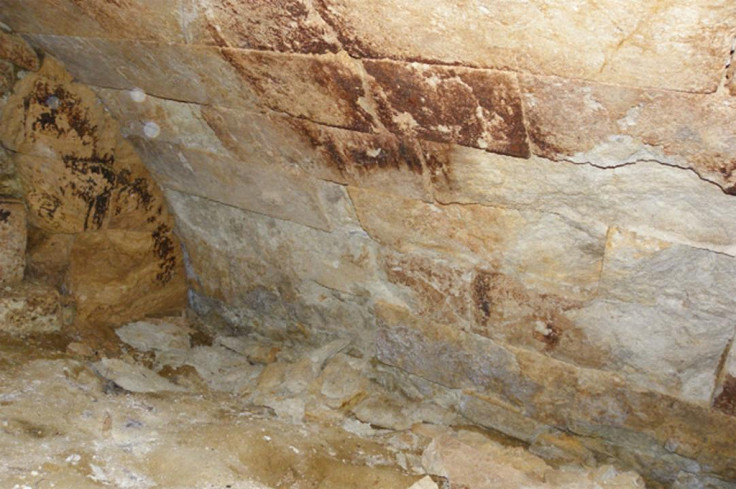
By drilling into the limestone sealing wall, the archaeologists discovered a small open doorway set into the wall in the second chamber that is still mostly covered in sand.
Using the doorway, the team succeeded in entering the third and final chamber to plan future excavation work and building supports for the tomb. Only the ceiling is so far visible.
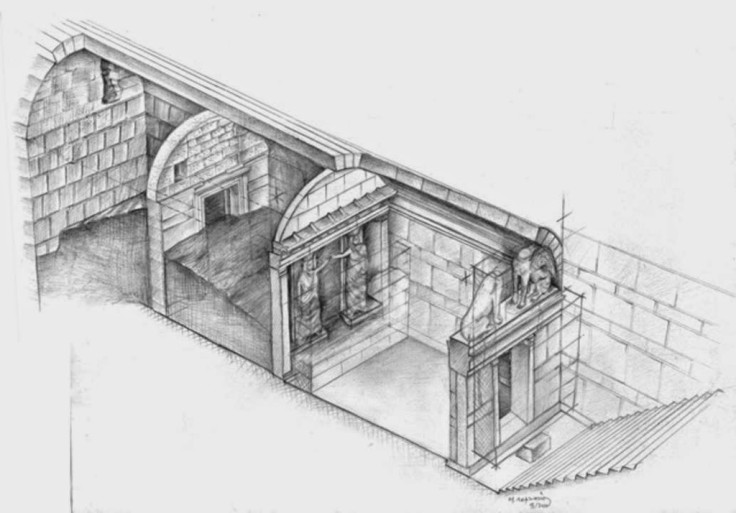
The burial mound measures 497m across, with a wall that is 3m high. Although it is almost a complete circle carved in marble, it is built in levels similar to the way an Egyptian pyramid is built.
Greek Prime Minister Antonis Samaras paid an official visit in August to the site with his wife and the Greek Culture Minister Constantinos Tassoulas, where the archaeologists explained their findings from a two-year excavation (see more photos).
Since the visit, Greek media has accused Samaras of using the discovery as a distraction to the political troubles facing the rather shaky new coalition government, likening Amphipolis to an "archaeological Disneyland" attracting streams of tourists.
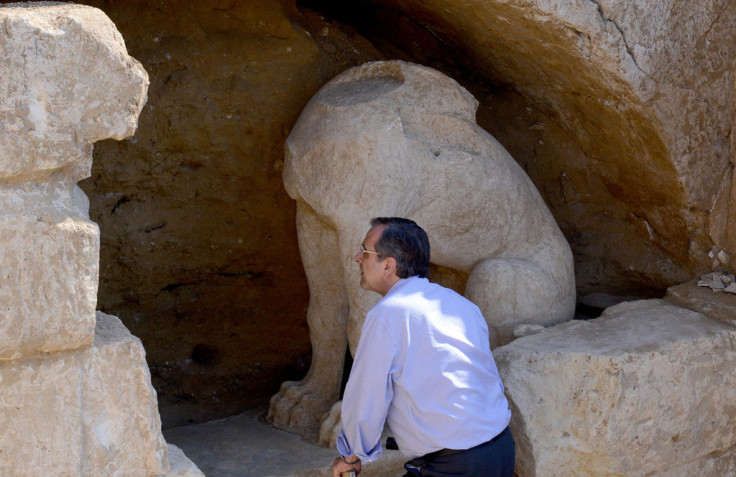
The famous Lion of Amphipolis, one of the best preserved monuments from 4<sup>th century BC, was found in 1912 by the Greek army in the river bed of the Strymónas.
Acclaimed architect Michael Lefantzis believes it once stood at the highest and most central point of the Kasta Hill mound. It now stands next to the old bridge over Strymónas river, on the street Amphipolis-Serraiki Akti.
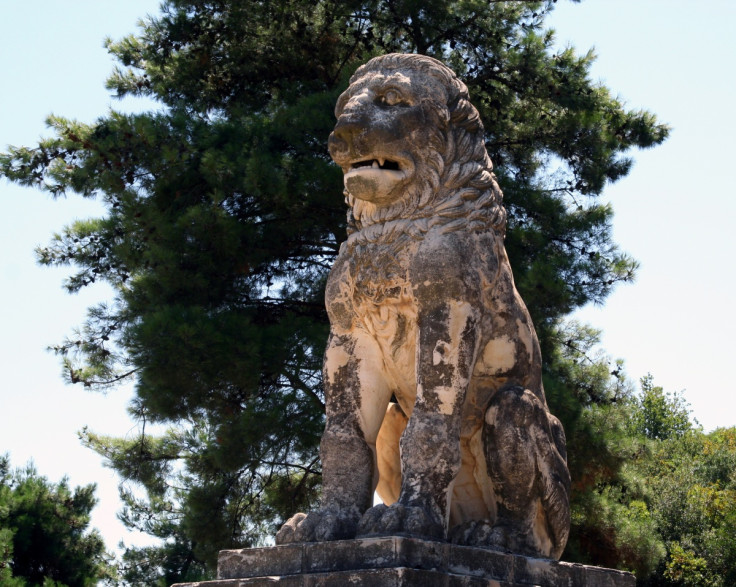
© Copyright IBTimes 2025. All rights reserved.





















